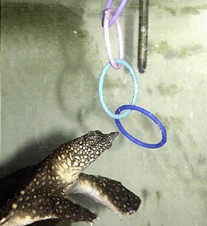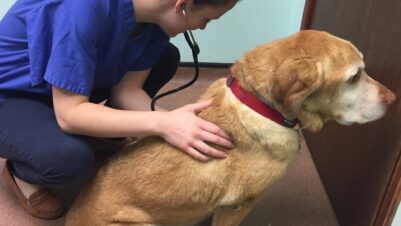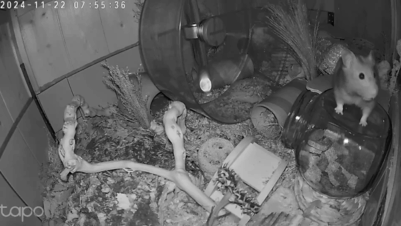HORSES are highly sensitive to their environment and surroundings and they can easily become stressed by encountering new situations. These can include new and troubling situations such as loading and travelling, clipping, changes in routine, exposure to loud noises, as well as dentist, farrier and veterinary visits.
Horses express stress in a number of ways including: weight loss (in extreme cases), box walking, weaving, cribbing, tooth grinding, licking, trembling, chewing and biting.
Changes in body language and posture are some of the most obvious signs we pick up when watching horses communicate. For example, a horse with ears flattened back, tail swishing and the facial muscles tensed is likely to be showing signs of aggression.
Horses will also use their senses, which are well adapted to allow immediate recognition of potential threats, to communicate. Horses’ large eyes are positioned on the side of their heads allowing wide panoramic vision of almost 350 degrees.
They can see over a good distance while also rapidly picking up small movements which is why sometimes a horse has spooked before we’ve even noticed what was about to emerge from the undergrowth! When one horse reacts, it is seen by the others in the herd and informs them of the potential threat.
Horses are also well equipped to hear faint noises, being able to respond to sounds up to 4,400 metres away. With 16 muscles in each funnel-shaped ear, they are able to move them in unison or independently as well as rotating them 180 degrees to pick up sound.
Although sound is used in communication, because horses are social prey animals they limit vocalisation to avoid attracting the attention of predators, finding other ways to organise themselves as a group. However, they will neigh to keep in contact and additionally use sounds such as nickering, snorting and squealing for various different reasons.
Touch and smell are also involved in sensory perception and communication. A horse’s whiskers are very sensitive as you may witness when they “test” the electric fence. It has been suggested that if whiskers are trimmed, horses are more at risk of injuries to the face when travelling as they lose the ability to detect what’s fixed around them.
Another area of increased sensitivity is the neck and withers: there are more touch receptors over this area which makes sense when you watch them groom each other. This allo-grooming is a comfort behaviour and helps reduce social tension.
High-ranking individuals within the herd will both groom more and also initiate more grooming. It has been suggested that by mimicking this action by gently scratching/stroking the withers you can help calm nervous horses.
In addition to smelling and sniffing when greeting, horses use their nostrils to take in pheromones (a chemical message produced by the horse). Equine pheromones can be secreted through sweat glands, sebaceous glands and in their urine.
The pheromones are detected by a special organ called the vomero-nasal organ (or Jacobson’s organ) which is located in the front of the head, between the nose and an area called the nasal fossa.
To help the pheromone reach the vomero-nasal organ, horses may perform a special movement called the Flehmen response. This is where the horse will curl its upper lip back whilst extending the neck. People are usually most familiar with this happening when a stallion or gelding is around mares in season.
It’s not just horses that produce pheromones: in most animal species there are a variety of pheromones which convey different information including: to signal an alarm, give information about the sexual cycle or to provide reassurance.
This information triggers specific behaviours in animals of the same species. It can either be a message to others or it can be picked up again by the same animal that produced them, almost like a little memo to themselves. This is useful in that if they have felt alarmed somewhere, they know to avoid it; or in contrast if they felt relaxed in an environment, they know it is safe.
When do they learn this behaviour?
Learning about how to interact socially and communicate within a herd starts as soon as those wobbly little foal legs hit the ground. Having mum close by helps with this education by directly teaching the foal but also by providing the security needed.
Nursing mares, like many mammalian species, naturally produce an appeasing pheromone which provides reassurance to their new foal. This pheromone helps to allow the foal to feel safe, secure and more con dent when encountering new situations and unknown environments helping them learn about the world around them.
The first maternal appeasing pheromones were identified in dogs and pigs by the IRSEA (Research Institute in Semiochemistry and Applied Ethology) in 1999. The dog appeasing pheromone (commercially available as Adaptil, Ceva Animal Health) has been widely and successfully used since 2002.
Current scientific thinking is that maternal appeasing pheromones activate a hormone called oxytocin, which is involved in milk production and maternal bonding (including stress reduction) amongst other things. IRSEA looked for the existence of these pheromones because it was noticed that young animals seemed more peaceful when they were exposed to objects which had been in contact with their mothers.
Since equine appeasing pheromone was identified, numerous studies have been conducted confirming its efficacy in controlling stress in commonly encountered situations by horses of all ages.
ConfidenceEQ (Ceva) is an exact copy of this equine appeasing pheromone. A horse will recognise and respond to pheromones throughout its life. In adult horses, the presence of this pheromone is a signal that the environment is safe and secure, which can help with learning, as learning new things can be stressful.
Although an extreme analogy, if a hungry lion wandered into a room where you were sitting and trying to learn something new, your ability to pay attention and absorb that information would rapidly diminish! In the same way minimising stress will help a horse be in the right frame of mind to learn.
Also, horses are adapted to react in order to survive so although it is normal for a horse to react to something it is fearful of, it’s not always helpful or safe for us as riders and handlers when this happens. Rearing when the clippers are turned on or when trying to load a horse onto a trailer is perhaps understandable but can be extremely dangerous.
Fear can be managed by working with horses to help them cope with situations they find worrying which is where using the pheromone can help.
The ideal time to use it is when you anticipate your horse will be exposed to something new which it may find stressful, alongside appropriate training. An example would be helping a horse to learn how to load calmly and safely. It could be used in addition to the normal steps applied to gradually allow a horse to become accustomed to a trailer or horse box.
It can help horses accept loading as not anything to be concerned about and leave them with a positive experience for the future, but it’s not a substitute for appropriate training. If a problem has already been established, e.g. the horse already has an issue loading, then ConfidenceEQ can be helpful alongside appropriate behavioural therapy in resolving it. It is always best to prevent an issue arising in the first place though.
The pheromone can be used to help build confidence in a variety of situations such as: loading, travelling and recovery after arrival, environmental changes (moving to a new yard, turnout or stabling, new owner or groom), training events (introducing new exercises), social situations (foal weaning, meeting new horses), farrier, vet or dental visits and dealing with loud noises (large crowds, thunderstorms, fireworks, gunshots, motor vehicles).
Finally, an extreme example of where the equine appeasing pheromone has been used to great effect is IRSEA’s involvement with the transportation of Asian Wild Horses (Przewalski’s horses) from France to Mongolia.
This ancient breed of horse has become endangered due to hunting, resulting in the need for conservation projects to be set up to preserve the breed. These projects wanted to enable the horses to learn to eat for themselves and cope with the rigorous climate, allow natural mating selection and for a natural herd to be built. Once fully prepared to go back into the wild, the horses faced an epic and stressful journey from where they were reared.
As you can imagine, the stress from such a journey was immense. Sedation to try to help them cope had detrimental effects on orientation and social bonding, with the combined result leaving the horses bewildered and exhausted on arrival which in turn left them vulnerable to natural predators. The great news is that by using equine appeasing pheromone strategically throughout the journey, the horses arrived much calmer and better able to adapt and resume the herd behaviour so essential for their survival.










